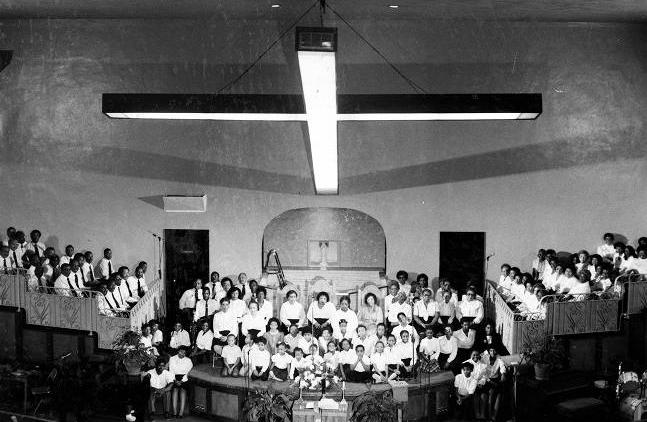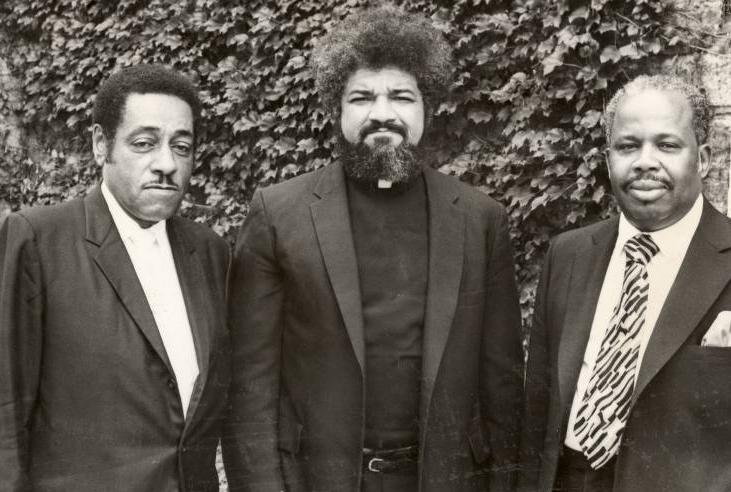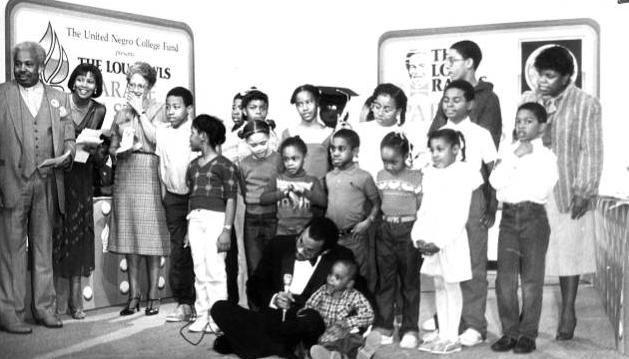Established in 1916, Saint John’s Missionary Baptist Church is best-known as the congregation of prominent Indianapolis civil rights leader .

Saint John’s Missionary Baptist began with three members. By 1926, the congregation was large and financially stable enough to construct its first permanent building at 17th Street and Martindale Avenue. Indiana senator James Watson spoke during the dedication ceremony in September of that same year. The first building, constructed of red brick with a white wooden portico, still stands. It served as the main sanctuary from 1926 until 2009. To accommodate a growing congregation, Indianapolis architecture firm HCO Incorporated designed and built a new church in the postmodern style.
In October 1947, the congregation called Andrew J. Brown to serve as its pastor. Immediately prior to coming to Indianapolis, he had been pastor at Mt. Zion Baptist Church in Chicago.

Brown launched his national civil rights career from Saint John’s pulpit. Early in his pastorate, Brown gained a reputation for his fiery preaching and singing. He was a popular guest preacher throughout Indianapolis at African American churches of all denominations. He also immediately became involved in the Indianapolis African American civic community. Before the national civil rights movement gained traction in the city, he spoke at the and various other local institutions. Because of Brown’s leadership, Saint John’s hosted many (NAACP) meetings and became a center of activity for the civil rights movement in addition to holding regular worship services. The city renamed Martindale Avenue to Dr. Andrew J. Brown Avenue in 1986. The current church is located at 1651 Dr. Andrew Brown Avenue.
Since Dr. Brown’s departure in 1990, St John’s has continued to grow and serve the neighborhood. In 2020 the church serves over 800 congregants with regular services throughout the week and serves its neighborhood through several outreach ministries, including a food pantry, prayer hotline, and regular visits to the city’s juvenile detention facility and homeless populations.


Help improve this entry
Contribute information, offer corrections, suggest images.
You can also recommend new entries related to this topic.